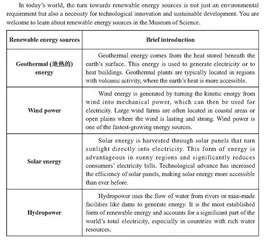Reading Comprehension 阅读理解

阅读下列短文,从每题所给的A、B、C、D四个选项中选出最佳选项。
(一)
A
主题 社会服务与人际沟通 语篇类型 应用文 词数 219
STINSON BEACH CLEAN-UP PROJECT
Help us keep Stinson Beach clean this summer! Warmer weather and plenty of holidays bring more people out to the beach which sometimes means more garbage too; join us once per month to clear litter and maintain the beauty there.
When: One Friday a month between May and September. 10:00 am—1:00 pm.
Where: Stinson Beach parking lot.
Supplies: We invite volunteers to bring their own reusable supplies! Limit waste by bringing your own bag or bucket and gloves if possible—but don’t worry if you don’t—we’ll have some supplies on site for you to use.
Group entry: Groups of five or more require special arrangements and must be confirmed in advance. Please review the List of Available Projects and fill out the Group Project Request Form.
Age, Skills, What to bring:
Volunteers aged 10 and up are welcome. Read our Youth Policy Guidelines for youth under the age of 15.
Bring your completed Volunteer Agreement Form. Volunteers under 18 must have the parent approval section signed.
We’ll be working rain or shine. Bring layers for changing weather and rain gear (雨具).
Bring a personal water bottle and sunscreen. Wear clothes that can get dirty. Long pants and closed-toe shoes are required.
No experience necessary. Training and tools will be provided. Fulfills community service requirements.
1. What is the aim of the project?
A. To attract the tourists. B. To beautify the beach.
C. To provide trip study. D. To conduct a research.
2. What is required for volunteers under 18?
A. Rich experience. B. Parent permission.
C. Bringing reusable supplies. D. Filling out the form in advance.
3. What does the project provide for volunteers?
A. Training. B. Long pants. C. Rain gear. D. Water bottles.
B
主题 生活与学习 语篇类型 记叙文 词数 316
When I was 12 years old, I spent most of my free time reading. But sadly, not everyone around me enjoyed reading as much as I did, and not being able to talk about my favorite hobby with my friends made my reading a lonely experience.
In my senior year of high school, I came across a channel, “Clau Reads Books” run by Claudia Ramírez Lomelí, who makes book-related content in Spanish, and was introduced to the book world of social media. I could finally hear someone else’s reaction to the stories I like. I love her videos because we prefer the same kind of books. Eventually, I followed her on another social networking site, and I learned about the community on it where users blog about their favorite books. I really wanted to be part of this space, and seeing others being so interactive and supportive made it seem like an acceptable community. However, I doubted my ability to express my thoughts well because I was unfamiliar with creating content to engage other readers.
Therefore, I started reading blogs on how to start a new account for guidance and after weeks of researching, I learned about the necessary social media skills. I had to spend time designing small sets and finding natural lighting and household items for photo shoots, and learn how to write engaging reviews while using hashtags (话题标签) in posts to attract other users.
My first post was a photo of my favorite book, Hush, Hush by Becca Fitzpatrick, with my hand’s shadow cast on a page. I also took pictures of several of my favorite sentences from the book and included a few hashtags to increase interaction. Attracting people with similar interest was hard at first. But gradually, it became kid’s stuff. The community quickly became a good place for me to talk about my favorite books with people having the same interest.
4. Why did the 12-year-old author feel upset?
A. She couldn’t spare time for play. B. No one around her liked reading.
C. She couldn’t share her love of reading. D. No friend was interested in her favorite book.
5. What can we learn about Claudia Ramírez Lomelí?
A. She comes from Spain. B. She hosts a TV program.
C. She taught the author how to blog. D. She led the author to a new book world.
6. What is Paragraph 3 mainly about?
A. Skills of choosing suitable hashtags. B. The author’s efforts to attract viewers.
C. Guidance on registering a new account. D. The author’s techniques for creating content.
7. What does the author think of attracting people with similar interest now?
A. It is easy to do. B. It faces new challenges.
C. It is mentally demanding. D. It needs topics related to kids.
C
主题 科学与技术 语篇类型 说明文 词数 304
There are many potential sources of clean energy out there: solar energy, wind energy, hydrogen based energy, and more. One of the less-known sources of clean energy is wave energy. Now the energy is being put to use in an almost funny way, turning seawater into drinking water by Oneka, a Canadian startup.
In general, there are two traditional kinds of desalination (脱盐) technology. In the first technology seawater is heated till the water changes into steam, leaving the salt behind, and then the steam is cooled, turning into water, and made available for use. In the second one, seawater is pushed through a see-through thin material, separating the salt and the water, which consumes relatively less fuel compared with the first technology. Whichever technology is used, however, most desalination plants run on non-renewable energy.